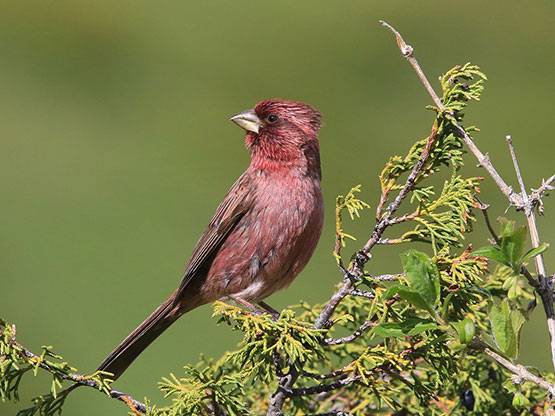Afghanistan – Armenia – Azerbaijan – Bahrain – Cyprus – Egypt – Georgia – Iran – Iraq – Israel – Jordan – Kazakhstan – Kuwait – Kyrgyzstan – Lebanon – Oman – Qatar – Saudi Arabia – South West Russia – Syria – Tajikistan – Türkiye – Turkmenistan – United Arab Emirates – Uzbekistan – Yemen

Capital: Bishkek
Area: 199,951 km2
BirdLife International partner: None
Total number of bird species: 327
Globally threatened bird species: 15
Country endemics: 0
Important bird and biodiversity areas: 11 IBAs with a total area of 1,880 km2
Rare birds committee: There is currently no rare birds committee in Kyrgyzstan.
Specialities: Bar-headed Goose, Himalayan Snowcock, Himalayan Griffon Vulture, Ibisbill, Lesser Sandplover, Rufous-naped Tit, Azure Tit, White-browed Tit-warbler, Blue-capped Redstart, Red-mantled Rosefinch.
Ornithological interest:
Due to its geographic location, Kyrgyzstan is home to both Himalayan and Central Asian bird species. With mountains covering nearly 90% of its area, several montane specialists can be found, and due to the relatively small size of the country, many can be seen within a reasonably short period of time. There are a number of regional endemics at high altitudes during the breeding season including several species of bunting, tit and redstart. In winter, some of these birds descend to lower altitudes and are easier to see, particularly after heavy snowfalls. They can even be found in city parks.
Along mountain streams and rivers, look for Blue Whistling-thrushes, Ibisbills and the more elusive Little Forktail. In Kyrgyzstan’s desert and semi-desert habitats there is a good chance of finding breeding Black-bellied and Pallas’s Sandgrouse, Turkestan Shrike and Rose-coloured Starling. Due to its topography, Kyrgyzstan lies slightly off the main migration flyways. Nevertheless, its large number of water bodies, including the vast Issyk Kul Lake which does not freeze in winter, provide crucial stopover and wintering sites for several species of waterfowl.
Best times to visit:
To enjoy breeding birds, plan to come between April and June when mountains become more accessible and some species are nesting or with young. To see high-altitude resident species, it might be an advantage to visit in December or January when many birds can be found at lower altitudes, including in urban areas.
Essential reading:
Ayé R, Schweizer M & Roth T (2012) Birds of Central Asia, Christopher Helm.
The local birdwatching community’s website can be found here: https://birds.kg/
Trip report links:
Compiler:
Maxim Koshkin
